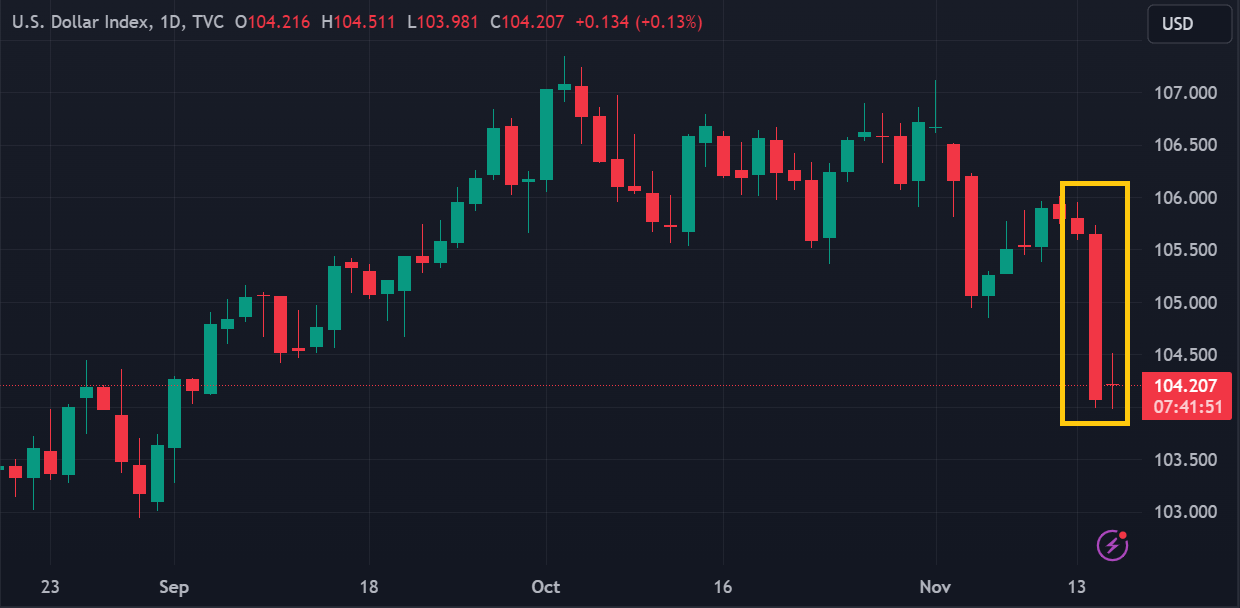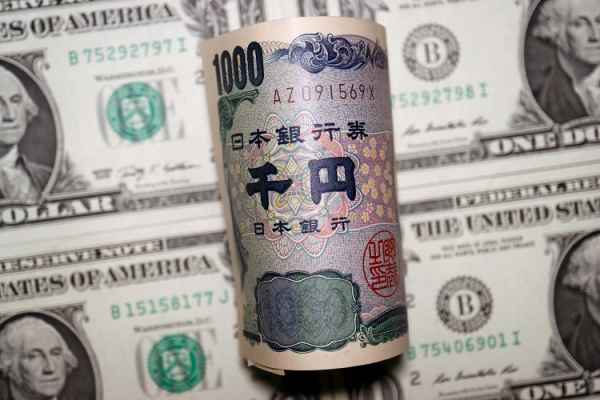The US Dollar is currently displaying mixed performance against various other majors.
The slump in the US Dollar Index (DXY) stalled at a low of 103.98 in Wednesday's New York session trading (15/November). However, the only supporting factor was the mediocre US retail sales data.

Several US economic data released this evening painted a mixed picture. Producer inflation (PPI) data was recorded at -0.5% (month-over-month) in October 2023, whereas the previous consensus expected a +0.1% increase. As such, this report provides additional evidence of the continued downward trend in inflation in Uncle Sam's country.
US retail sales data recorded -0.1% (month-over-month) in October 2023. The figure was better than the consensus estimate pegged at -0.3% but reflected a sharp deterioration from the +0.9% performance in the previous period.
Some analysts argue that the latest US economic data does not carry a new message for market participants. CME Group data still shows zero chance of further rate hikes, as well as an increased chance of Fed rate cuts in the first half of next year.
"Today's (retail sales) number doesn't really move the needle one way or the other, other than sort of convince you that things are definitely slowing down in the U.S. still," said Brad Bechtel, global head of FX at Jefferies in New York.
Bechtel noted that the US dollar has tended to underperform in the fourth quarter over the past two years. The US dollar tends to peak in the third quarters of 2021 and 2022, and then experience a sell-off until January.
"I'm not necessarily saying that history is going exactly to repeat itself, but I don't necessarily want to be buying or getting long the dollar just yet," he said. "We need to see more of this play out."
The greenback is currently displaying mixed performances against various other majors. AUD/USD and NZD/USD are still ahead thanks to the help of domestic and Chinese economic data. EUR/USD and GBP/USD edged lower following the release of static UK inflation data in October 2023. Meanwhile, USD/JPY tends to fluctuate within a limited range between 150.00-152.00 as it is restrained by the large number of options contracts expiring in this period.

 Dedicated FREE FOREX VPS
Dedicated FREE FOREX VPS Free FOREX Virtual Private Server
Free FOREX Virtual Private Server MT4 Demo Contest, Get $500
MT4 Demo Contest, Get $500 Sign Up for an Account, Claim 60% Deposit Bonus
Sign Up for an Account, Claim 60% Deposit Bonus Free MT4/MT5 VPS 2024
Free MT4/MT5 VPS 2024 Send E-mail and Get Free Merchandise
Send E-mail and Get Free Merchandise $1K Refer a Friend Bonus for Pepperstone Pro clients
$1K Refer a Friend Bonus for Pepperstone Pro clients Maximize Your Earnings with 100% Deposit bonus
Maximize Your Earnings with 100% Deposit bonus Trade to Win, $5,000 Monthly Demo Contest
Trade to Win, $5,000 Monthly Demo Contest Claim 30% + 15% Deposit Bonus from LiteFinance
Claim 30% + 15% Deposit Bonus from LiteFinance






